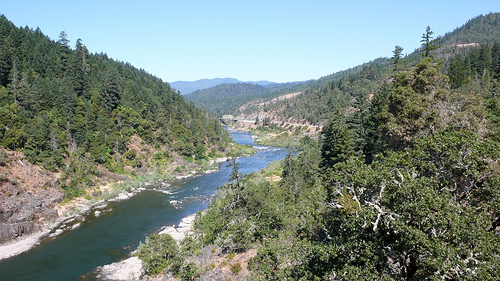By Roy Keene
The “O&C Trust, Conservation, and Jobs Act”: Don’t be fooled by the name!
The act is a political effort to achieve the de facto privatization of 1.5 million acres of public land. Its aim is to increase logging by decreasing citizen involvement and environmental protection.
The act would privatize federal forestlands in Oregon currently managed by the U.S. Bureau of Land Management. These forests are now subject to citizen comment and the scientifically astute management guidelines of the Northwest Forest Plan.
Supporters try to convince us that this is the only practical way to increase and stabilize timber supplies, revenue and employment. They aren’t telling us how previous privatization schemes worked out.
The Shelton Ranger District in Washington was privatized as a “sustained yield unit.” Logging, related employment and revenue boomed until the 110,000 acre district was quickly cut out.
Taking the Shelton District out from under federal protection eventually resulted in denuded and eroded watersheds and lost salmon runs. Communities forfeited their future, forest and livelihood while Simpson Timber Co. made millions.
Oregon’s Common School Fund lands were given away to private parties for a tiny fraction of their value, supposedly to fix timber and revenue shortages. Over time, 3.4 million public acres have been sold or traded, leaving only 770,000 acres. Had these forests been logged sustainably under public ownership, they would be producing far more revenue than the Common School Fund produces today.
In his guest viewpoint in the May 21 Register-Guard, Ken Allen, a union executive, claims that the act’s increased logging “will create desperately needed new jobs.”
In 2001, when 38 million board feet were harvested from former Oregon & California Railroad lands, there were 46,000 timber industry jobs.
In 2009, four times more O&C timber was harvested, yet timber related jobs declined to 27,000. Lane County’s total timber harvests increased 35 percent from 2009 to 2010, but overall employment and revenue dropped!
It’s not just about how much timber is logged, but the size of the sales, who buys them, where the timber goes, who works on it and how much it’s processed that determines employment levels. The act doesn’t address these vital issues.
The state Employment Department said, “Technological advances, more automation and less labor intensive manufacturing processes conspired to reduce demand for employment, despite the ramp-up in timber production.”
The state Office of Economic Analysis compares timber industry job declines with steady job growth in the nontimber sector. It shows the timber industry’s contribution to Oregon’s economy to be only 1 percent, contrasted to 12 percent during the earlier preautomation years of huge harvests.
Allen says the act “establishes a permanent baseline for sustainable timber production.”
The act provides no “permanent baseline,” but rather is a directive to “produce annual maximum sustained revenues.” It leaves 50 percent of the 1.5 million acres unprotected by any stated rotation age. This is a sure recipe for overcutting, especially since the rules of Oregon’s Forest Practices Act don’t mandate sustained yield.
Allen claims that the act “will protect the rights of all landowners involved.”
How are the rights of the American people, the current landowners, protected? The act proposes to pay the U.S. Treasury $70 million for 1.5 million forested acres. That’s $50 an acre for an average BLM acre where the real worth is $7,000! It would be far more prudent for the public to keep their forests and continue paying the O&C counties a timber tribute.
Supporters claim the act will provide sustainable and predictable revenue for county services such as public safety and health.
Our archaic reliance on logging for revenue to support services never has been sustainable or predictable. That is why we’re short now.
Oregon needs to establish equitable taxes to sustainably fund services. Oregon Measures 66 and 67, which increase the taxes slightly on wealthy persons and minimum corporate taxes (the first corporate increase since 1931), produce many times more revenue than the O&C Act proposes to derive from privatizing public forests.
Eighty percent of the logging in Lane County is on corporate lands. The public absorbs the collateral damage to water, wildlife, fisheries and quality of life. Establishing fair compensatory taxes for large corporate forest owners could exceed the anticipated revenue from the O&C Act.
Allen says, “The plan prohibits raw log exports.”
That is misleading. The O&C act won’t affect the one-third of Oregon’s annual timber harvest currently exported as raw logs from private lands, often by such out-of-state corporations as Weyerhaeuser, which manages more forestland in Lane County than the BLM.
Privatizing public forests never has produced sustainable timber supplies, revenue or jobs. The result has been to devalue rural environments, quality of life and employment.
Reducing raw log exports, establishing fair taxes and fostering value-added wood products is where our politicians should focus to democratically increase local timber supplies, revenue and jobs.
Roy Keene of Eugene is a forest consultant who has evaluated forest investments for companies such as Travelers Insurance.



